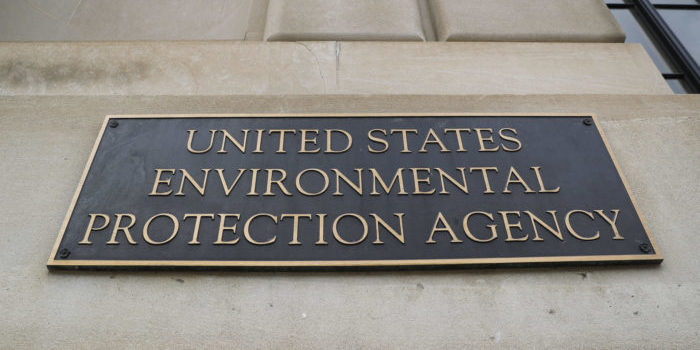(Headline USA) Drawing inspiration from the Obama-era “Operation Choke Point” and the controversial ESG investing movement, the Biden administration is using a sticks-and-carrots approach to force banks to follow its aggressively woke agenda.
On one hand, it has threatned banks with fines and investigations for insufficient money-lending to high-risk minority borrowers, including illegal immigrants, under the guise of a crackdown on “redlining”—a nebulous social-justice buzzword for assessing the likelihood of loan repayment based on one’s current living conditions.
However, for those who toe the line with risky lending and investment practices by gambling on “green energy” projects that consumers have widely rejected in the marketplace, there may be a special reward, courtesy of U.S. taxpayers.
The Environmental Protection Agency on Thursday awarded $20 billion in federal “green bank” grants to eight community development banks and nonprofit organizations to use on projects combating climate change in disadvantaged communities and other objectives tied to so-called environmental justice.
The money could fund tens of thousands of eligible projects ranging from residential heat pumps and other energy-efficient home improvements to larger-scale projects such as electric vehicle charging stations and community cooling centers, according to senior administration officials.
It comes as leftist states increasingly seek to shake down woke corporations, including financial institutions and energy companies, to fund their climate agenda.
A recent bill passed by the Vermont legislature said fossil-fuel companies like Exxonmobile are obliged to contribue to a “superfund” to help pay for the impacts of climate change, even if no direct causal culpability between the companies’ specific practices and the environmental impacts can be established.
Other states— including California, New York, Massachusetts and Maryland—are certain to follow suit.
Katherine Hamilton, chair of public policy firm 38 North Solutions and who worked on underlying legislation for the federal fund, said it used similar efforts in states like Connecticut as blueprints for the federal shakedown.
“The scale envisioned for these entities could model successful state green banks while supercharging the number of communities served,” Hamilton said in an email.
She added that would help the country move “more quickly through the energy transition.”
Vice President Kamala Harris, EPA Administrator Michael Regan and other officials planned to announce the grant selections during a visit to Charlotte, North Carolina on Thursday.
Recipients were awarded competitive grants from two of the three programs overseen by the “green bank” created in the Biden administration’s Inflation Reduction Act, passed in 2022.
Formally known as the Greenhouse Gas Reduction Fund, the $27 billion bank is one of many federal efforts to invest in solutions that cut planet-warming greenhouse gas emissions and address human-caused climate change, a topic President Joe Biden has emphasized in his presidency and reelection campaign.
The bank’s goals are to reduce climate and air pollution and mobilize public and private capital in the communities that need it most.
As part of Thursday’s news, the $14 billion National Clean Investment Fund program granted money to three nonprofits that will partner with states and the private sector to provide affordable financing for projects across the country.
The $6 billion Clean Communities Investment Accelerator also granted money to five institutions that will work with other groups to establish hubs that make funding and technical assistance accessible to community lenders.
Recipients committed to spending $7 in private sector funding for each $1 from the federal investment money, to “reduce or avoid” 40 million metric tons of carbon dioxide each year and earmark 70% of the money for disadvantaged and low-income communities.
Among the eight funding recipients are:
- Coalition for Green Capital, a nonprofit working with a nationwide network of state, local, and nonprofit green banks, received $5 billion.
- Power Forward Communities, a nonprofit coalition formed by five housing, climate, and community investment groups, received $2 billion.
- Appalachian Community Capital, a nonprofit community development financial institution working with lenders in Appalachia, received $500 million.
Also part of the bank is the $7 billion Solar for All program, which will award states, tribes and municipalities money for a variety of residential and community solar projects at a later date.
Specifics around the bank were outlined last February, with applications for the programs sought in July and due last fall.
“I do think this is a really important part of our national strategy to reduce greenhouse gas emissions and engage every community in the clean energy revolution,” Maryland Sen. Chris Van Hollen told the Associated Press in an interview.
The Democrat first introduced legislation to create a national green bank 15 years ago. “Now we just need to work very hard on implementation,” he said.
But the taxpayer-funded green bank has also faced opposition, notably from Republicans in Congress, who have called it a “slush fund” and voiced concern over accountability and transparency on how the money is used.
House Republicans passed a bill last month to repeal the bank and other parts of the president’s climate agenda.
Adapted from reporting by the Associated Press

